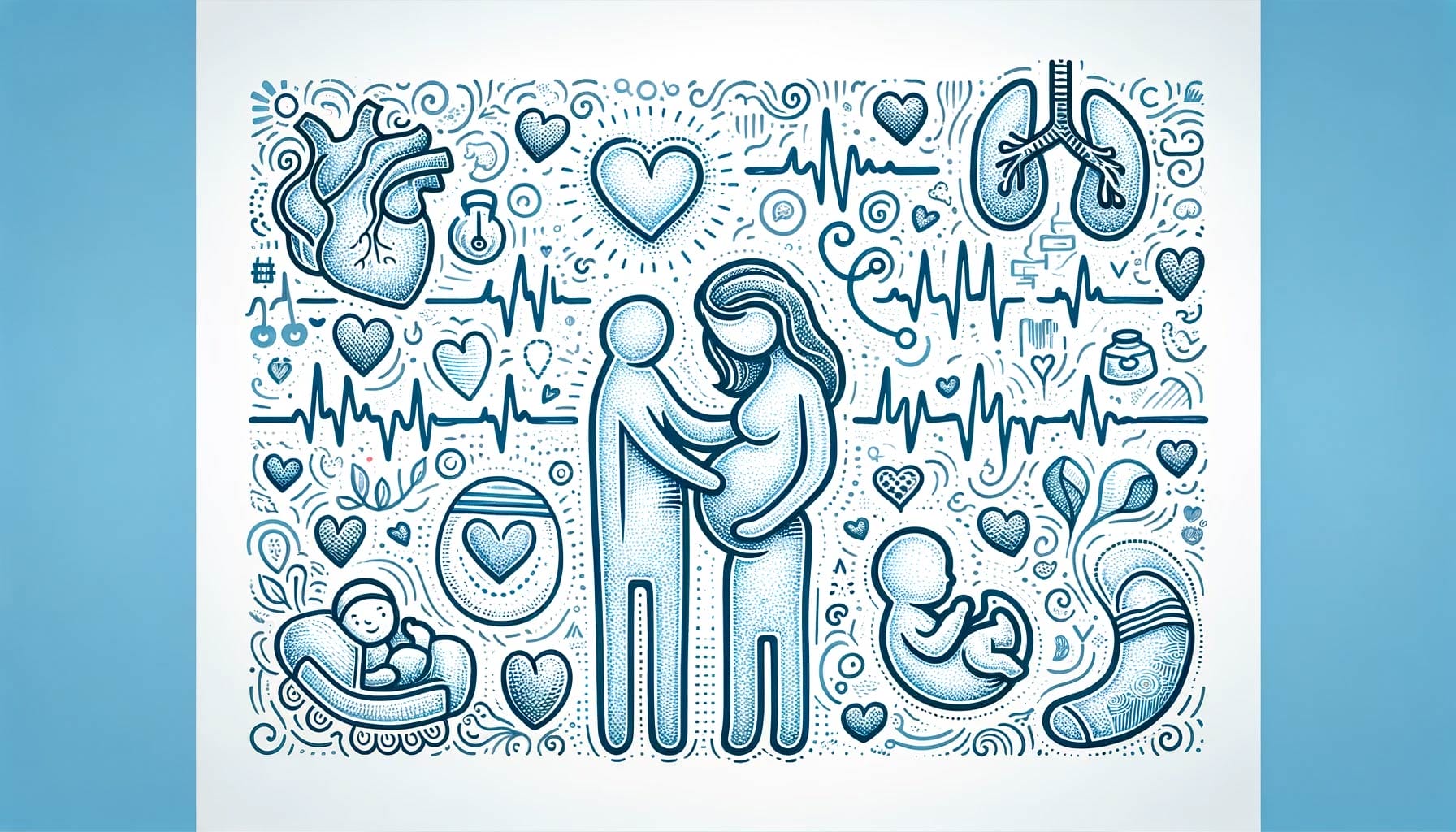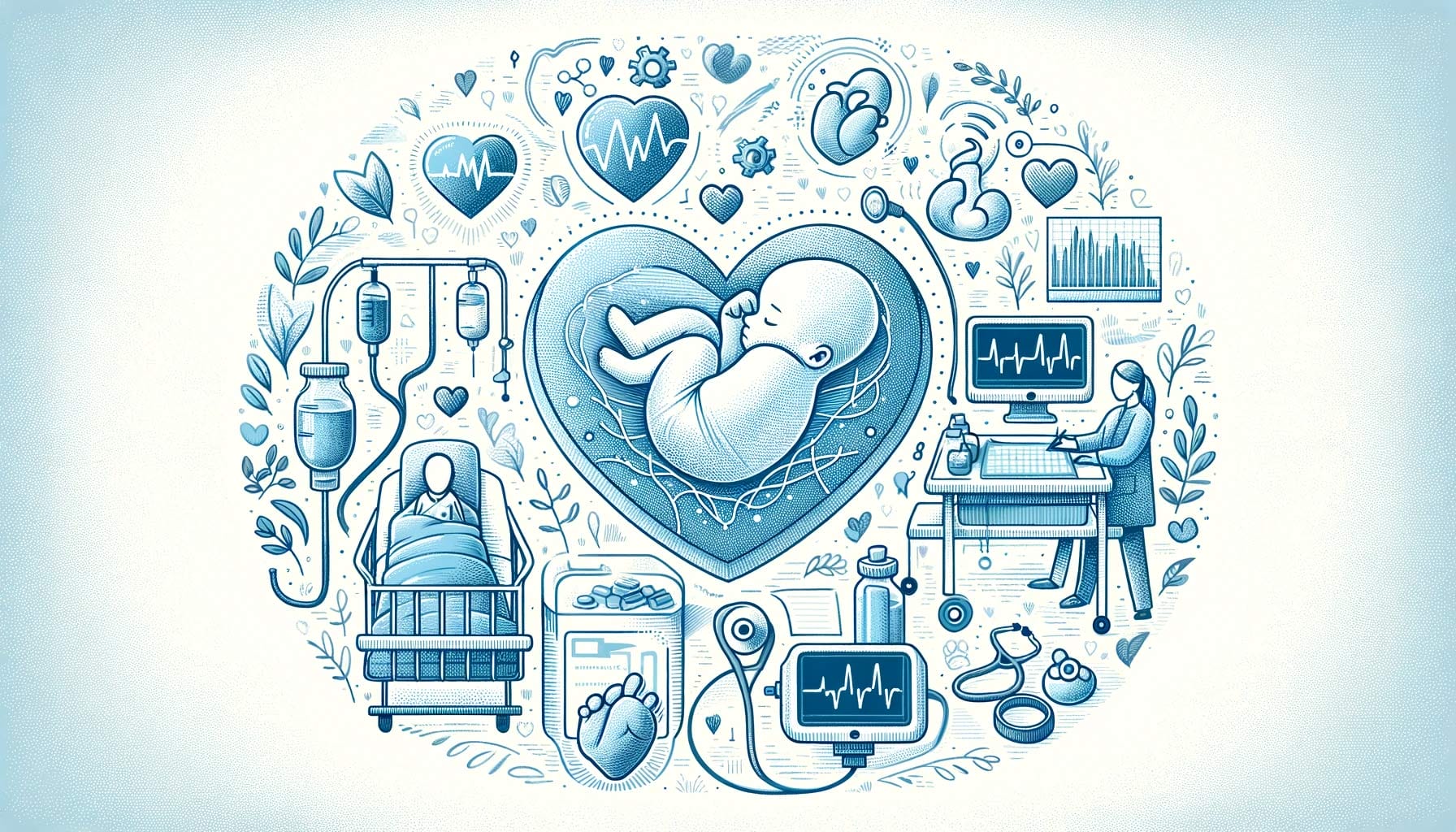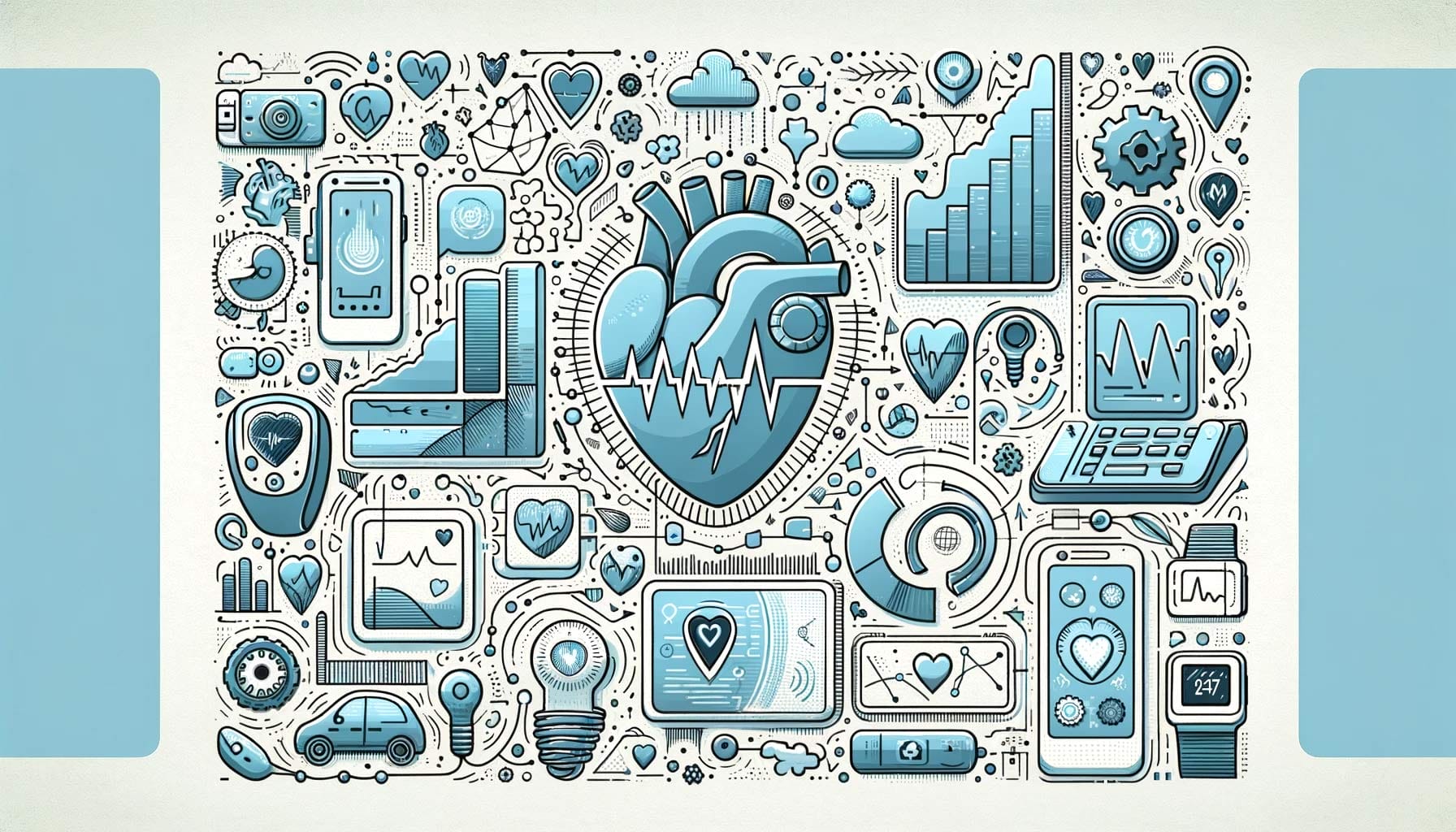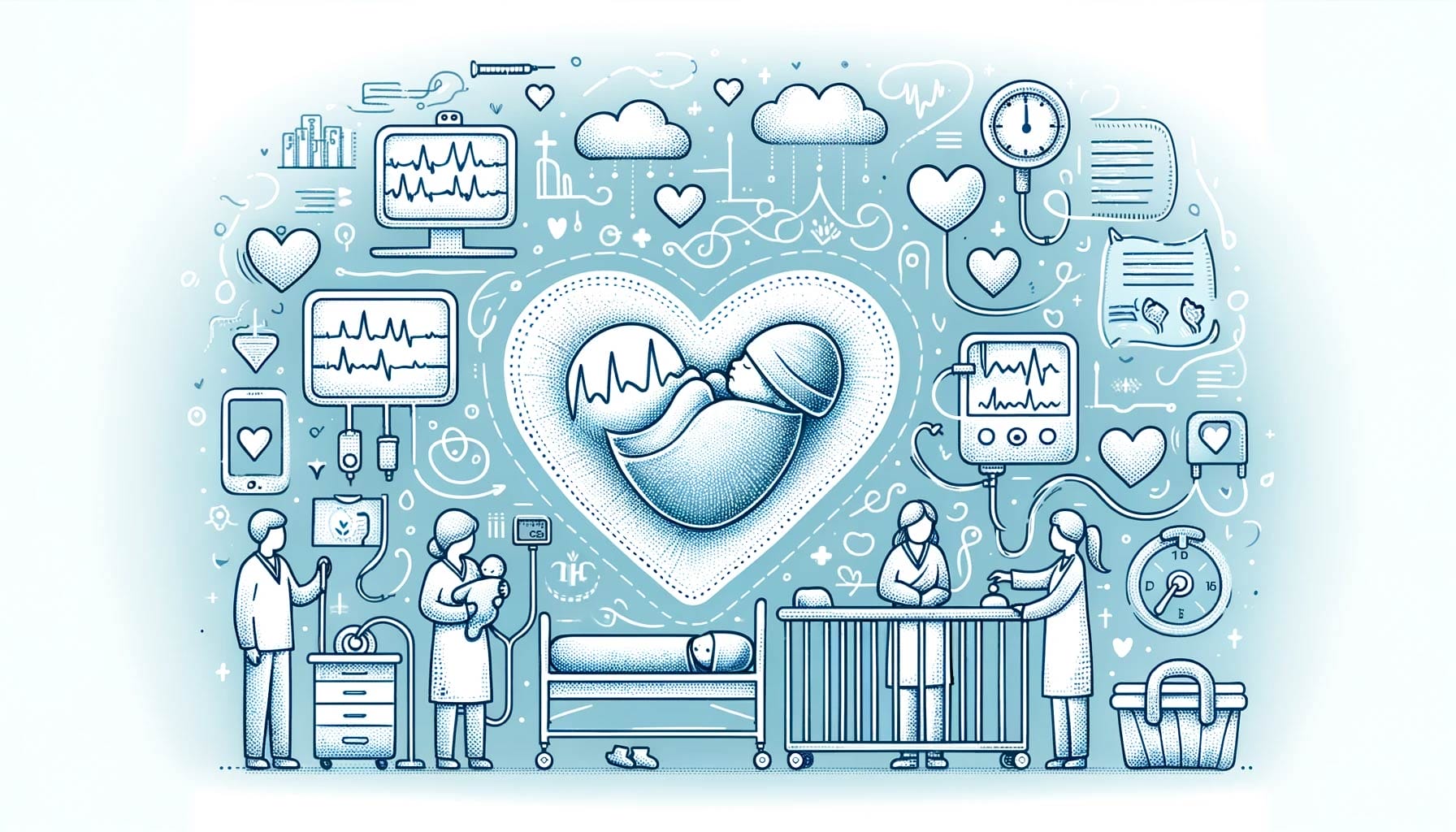Introduction
Heart rate variability (HRV) is gaining attention as a critical metric in prenatal and neonatal care. Its ability to provide insights into the autonomic nervous system makes it an invaluable tool for monitoring the health and development of both mother and child during these crucial stages.
The introduction of HRV into prenatal and neonatal care marks a significant advancement in understanding the health of the unborn and newborn. HRV, the physiological phenomenon of variation in the time interval between heartbeats, is more than just a measure of heart health; it is a window into the autonomic nervous system. This is particularly vital in prenatal and neonatal stages where direct assessment of wellbeing is limited. This article aims to explore the multifaceted role of HRV in prenatal and neonatal care, highlighting its implications, challenges, and future prospects.
“In prenatal and neonatal care, understanding the language of the heart through HRV can be a lifeline, offering unprecedented insights into the unseen.“
For those new to the concept of HRV and its broad applications, our Ultimate Guide to Heart Rate Variability offers an in-depth introduction and a wealth of information on this vital health metric.
HRV in Prenatal Care

Fetal HRV Monitoring
The monitoring of fetal HRV provides crucial insights into the health of the fetus. It can reveal vital information about the fetal environment and potential stressors that could affect development. By analyzing the patterns and variability in the fetal heartbeat, healthcare providers can detect signs of distress or abnormal development early on, enabling timely interventions.
Maternal Health and HRV
A mother’s HRV is an equally important factor in prenatal care. It offers a glimpse into her stress levels and overall well-being, both of which have direct implications on the fetus. High stress levels in the mother, for instance, can lead to reduced HRV, indicating potential risks to both maternal and fetal health. Monitoring maternal HRV can therefore play a significant role in ensuring a healthy pregnancy.
“The ebb and flow of a mother’s heart rate variability paint a picture of her inner world, one that resonates deeply with the life growing inside her.”
The comprehensive impact of stress and the importance of recovery is further explored in HRV and Mental health: Beyond Stress and Anxiety, which delves into how HRV can guide overall wellness strategies.
HRV in Neonatal Care

Neonatal HRV monitoring is crucial in the early days of a newborn’s life, especially for those in neonatal intensive care units (NICUs). It provides valuable information about the newborn’s autonomic nervous system and its ability to adapt to the new environment outside the womb. By closely observing changes and patterns in HRV, neonatologists can detect early signs of distress, infection, or other health issues, allowing for prompt and appropriate care.
“Every beat of a newborn’s heart, and the variability within, tells a story of adaptation and resilience, a narrative best understood through the lens of HRV.”
Technological Advances in HRV Monitoring

The field of HRV monitoring is witnessing rapid technological advancements. The development of wearable technologies has enabled non-invasive, continuous monitoring of HRV, making it more accessible and convenient. These devices are revolutionizing prenatal and neonatal care by allowing for real-time monitoring without the need for extensive hospital stays or invasive procedures.
“Technological innovations in HRV monitoring are not just enhancing our understanding but are actively rewriting the rules of prenatal and neonatal healthcare.”
Additionally, the integration of data analytics and machine learning in HRV analysis is enhancing the accuracy and usefulness of HRV data. These technologies can discern patterns and anomalies that might be missed by the human eye, providing deeper insights into fetal and neonatal health. Delve into the complexities of measuring heart rate variability in our detailed article, “Unraveling the Intricacies of HRV Measurement Techniques“.
Challenges and Future Directions
Despite the advancements, HRV monitoring in prenatal and neonatal care faces several challenges. These include the need for more standardized protocols, the interpretation of HRV data across different stages of development, and the integration of these technologies into routine clinical practice.
Looking to the future, ongoing research and development in HRV technology hold the promise of overcoming these challenges. There is a growing interest in refining HRV monitoring techniques, improving their accuracy, and making them more user-friendly for both healthcare providers and patients.
“The path of HRV in prenatal and neonatal care is paved with challenges, but each obstacle overcome brings us closer to a future where every heartbeat tells a story of health and well-being.”
Conclusion

HRV stands as a vital tool in the realm of prenatal and neonatal care. Its ability to provide non-invasive, real-time insights into the autonomic nervous system opens up new possibilities for monitoring and improving the health of both mother and child. As technology evolves, so too will the applications of HRV, heralding a new era in maternal and neonatal healthcare.
“In the rhythmic fluctuations of heartbeats, lies the essence of life’s beginning stages, and in understanding these, we unlock the potential for healthier starts for our youngest and most vulnerable.”
Key Points and Take-Home Messages
- HRV as a Window into Autonomic Health: HRV monitoring in prenatal and neonatal care provides critical insights into the autonomic nervous system of both the mother and child, offering a unique perspective on their health and well-being.
- Fetal Health Monitoring: Fetal HRV is a valuable tool for detecting fetal distress and abnormal development, enabling early interventions that can significantly impact pregnancy outcomes.
- Maternal Well-Being: Maternal HRV reflects a mother’s stress levels and overall health. Monitoring it can help in managing and mitigating risks associated with stress and health during pregnancy.
- Importance in Neonatal Care: In neonatal care, especially in NICUs, HRV monitoring is essential for assessing the health and adaptability of the newborn’s autonomic nervous system.
- Technological Evolution in HRV Monitoring: The advancement of wearable technologies and data analytics has revolutionized HRV monitoring, making it more accessible, non-invasive, and accurate.
- Challenges and Future Prospects: Despite its potential, HRV monitoring faces challenges like the need for standardized protocols and integration into routine clinical practice. Future research and technological improvements are expected to address these issues.
- A Step Towards Improved Care: HRV monitoring is paving the way for enhanced prenatal and neonatal care, promising a future where health interventions are more timely, precise, and effective.
- Non-Invasive Insights: The non-invasive nature of HRV monitoring makes it an appealing option in prenatal and neonatal care, reducing the need for more invasive procedures.
- Predictive Power of HRV: HRV’s potential in predicting and preventing complications in both prenatal and neonatal phases highlights its significance in proactive healthcare management.
- HRV: A Marker of Overall Health: Beyond heart health, HRV serves as a marker of overall physiological and emotional well-being, crucial in the critical stages of life’s beginning.
You Might Also Be Interested
- 📚 Delve into our comprehensive HRV Article Collection for insightful perspectives on Heart Rate Variability (HRV).
- 🔍 Learn how the advanced features of Fibion Emfit & Fibion Vital can aid you in your HRV research.
- 📅 Planning an HRV measurement and analysis? For a chat with our HRV expert, book a session with Dr. Miriam Cabrita.
Frequently Asked Questions on This Topic
What is Heart Rate Variability (HRV) and its significance in prenatal and neonatal care? +
HRV, the variation in the time interval between heartbeats, is crucial in prenatal and neonatal care as it offers insights into the autonomic nervous system, aiding in monitoring the health and development of both mother and child.
How does fetal HRV monitoring contribute to prenatal care? +
Fetal HRV monitoring provides essential insights into fetal health, revealing information about the fetal environment and stressors that could impact development. It helps in early detection of distress or abnormal development.
Why is maternal HRV important in prenatal care? +
Maternal HRV reflects the mother’s stress levels and overall well-being, which have direct implications on fetal health. Monitoring maternal HRV helps in managing risks and ensuring a healthy pregnancy.
What role does HRV play in neonatal care, especially in NICUs? +
In neonatal care, particularly in NICUs, HRV monitoring is vital for assessing the newborn’s autonomic system and adaptability. It helps in early detection of distress, infection, or other health issues in newborns.
How are technological advances enhancing HRV monitoring in prenatal and neonatal care? +
Technological advances, such as wearable technologies and data analytics, are making HRV monitoring more accessible, non-invasive, and accurate, thus improving prenatal and neonatal healthcare practices.
What challenges and future directions exist for HRV monitoring in this field? +
Challenges include the need for standardized protocols and integrating these technologies into routine clinical practice. Future directions involve refining HRV monitoring techniques and improving their usability in healthcare.











